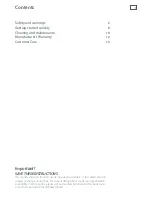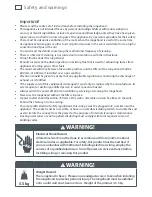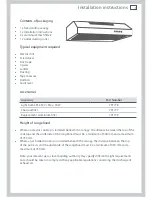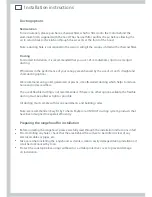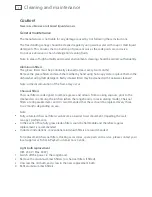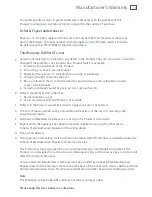
6
Installation instructions
5
Determine location of the fixing “keyholes”
on the wall. The hood is secured to the
wall by two “keyholes” located on the rear
panel of the hood in the top left and right
hand corners. From the point where the
horizontal and vertical lines drawn earlier
intercept, use a spirit level and pencil and
draw another horizontal line 120 mm above
the first horizontal line (ensuring that the
line can easily be erased or the line will be
hidden after installation) as shown in fig.5.
This now indicates where the top of the
“fixing keyholes” are. Where the vertical line
meets the top horizontal line (just drawn),
measure and mark both sides of the vertical
line, showing where to drill.
6
Drill holes and secure the rangehood to the
wall. Depending on the wall type (concrete,
drywall, etc) drill/screw appropriate fittings
in the two locations just marked. The
rangehood should now be able to be hung
on these bolts/screws through the two
keyholes in the hood.
7
Create additional means of attachment.
Keyholes alone are insufficient means of
attachment. There are two extra holes
found on each side of the back panel.
Select one on each side and fit screws (with
an anchor if required) to ensure proper
attachment, as shown in fig.6. Ensure all
fixings are secure.
8
If ducting externally, assemble and fit
ducting as per manufacturer’s instruction.
9
Test the operation of the rangehood. Plug the rangehood in and test its operation on all speed
levels. This will ensure that any imperfections in the installation, such as unwanted sounds or
lack of suction can be addressed. Over 95% of service calls are a result of faulty installation.
Please be aware that in the event of a service call for a faulty installation, you will be charged as
this is not covered under the manufacturer’s warranty.
538 mm
269 mm
120 mm
Fig.5 Determining location of the two fixing “keyholes”
Extra fitting holes
Keyholes
Fig.6 Creating additional means of attachment



